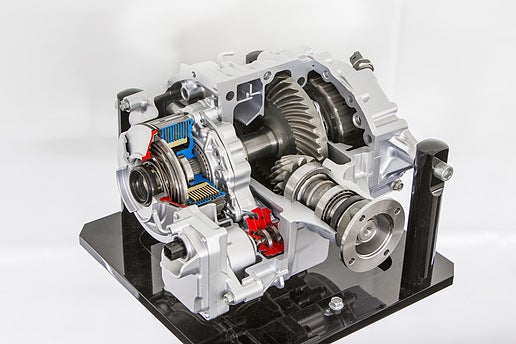 "Driving Sports TV" (drivingsports)
"Driving Sports TV" (drivingsports)
01/18/2019 at 13:30 ē Filed to: all wheel drive
 3
3
 3
3
 "Driving Sports TV" (drivingsports)
"Driving Sports TV" (drivingsports)
01/18/2019 at 13:30 ē Filed to: all wheel drive |  3 3
|  3 3 |
Honda may not be the first name you think of when you consider an all-wheel drive vehicle, but maybe it should be. In this video we take a closer look at the i-VTM4 system in the 2019 Honda Pilot, Ridgeline and Passport, and compare it to SH-AWD in the 2019 RDX and MDX.
 Highlander-Datsuns are Forever
> Driving Sports TV
Highlander-Datsuns are Forever
> Driving Sports TV
01/18/2019 at 13:42 |
|
Iíve gotten a CRV stuck in 6" of snow. I was like what? It has an AWD sticker on the trunk why are only the front tires spinning?
 HammerheadFistpunch
> Driving Sports TV
HammerheadFistpunch
> Driving Sports TV
01/18/2019 at 14:28 |
|
A couple of corrections (?) I noted watching it.
I t doesnít act like an LSD because they donít ďlockĒ like an lsd does, because there is no direction connection between each side shaft. They actually overdrive the outside wheel and un power the inside one. The effect and mechanics are very different. In some ways its far superior to an LSD, but an LSD it is not.
Many modern on-demand are also proactive. Subaru, Toyota and Mazda will preload the clutchpack on the rear drive module when it gets a signal from the gas pedal that you are launching, for example, before slip is detected.
The way the rear drive module vectors torque on the i-vtm4 system is actually harder on the clutches than other systems which causes exacerbated heat and wear issues, not reduced.

Because there is no clutchpack to engage or disengage the RDM all the rear bias happens in the side clutches of the spool and because there are planetary overdrives on each side shaft (1.027:1 ratio) everytime the rear module kicks in and there ISNíT wheelslip the clutches have to slip to keep wheel speed in sync. That means on dry surfaces the clutches are always slipping anytime the system is active. Honda does a pretty good job of keeping the fluid cool, but ití s not hard to overheat it when worked.
 someoneatacura
> Highlander-Datsuns are Forever
someoneatacura
> Highlander-Datsuns are Forever
01/25/2019 at 11:31 |
|
Until recently the CRV was using a fairly plebeian AWD system. T he 2017 and up CRV is much more stout. †